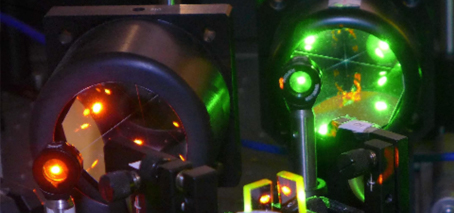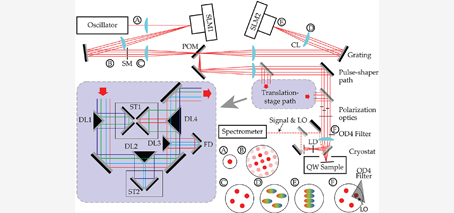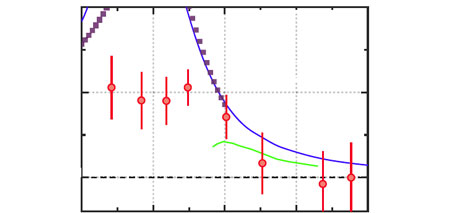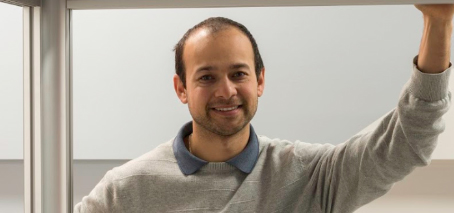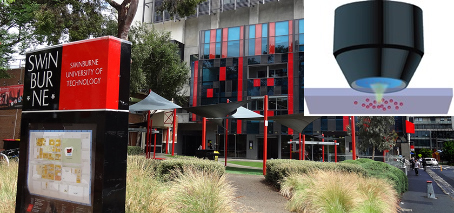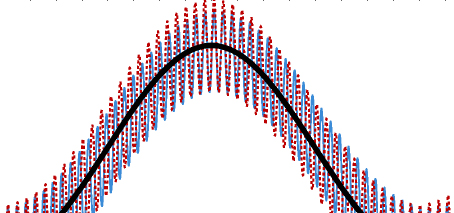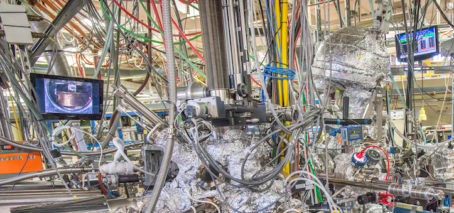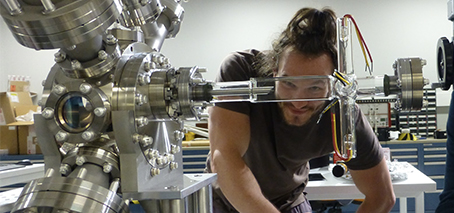Half of the 2018 Nobel Prize for Physics has been awarded to Gérard Mourou and Donna Strickland for their method of generating high-intensity, ultra-short optical pulses Ultra-fast laser physics key to development of future electronics The technique developed by Mourou and Strickland has had enormous impact across the fields of chemistry, physics and biology, and provides the basis for important …
Laser pulses quadrillionths of a second long probe electronic structure at Swinburne
Quantifying the dynamics and interactions of electronic systems is crucial for understanding the mechanisms that make them useful candidates for ultra-low energy electronics. We need to observe and measure the behaviour of electron interactions at a femtosecond scale (ie, at a few millionths of a billionth of a second). As a research tool, Optical Coherent Multidimensional Spectroscopy (CMDS) offers the …
Quantum anomaly – breaking a classical symmetry with ultracold atoms
Scaling symmetry in a 2D Fermi gas breaks down with strong interactions between particles Quantum gas studies unlock fundamental physics—with an immediate application A FLEET study of ultracold atomic gases – a billionth the temperature of outer space – unlocks new, fundamental quantum effects. The researchers at Swinburne University of Technology studied collective oscillations in ultracold atomic gases – identifying …
Carlos talks ultra-cold atoms and inspiring schoolkids to do science, RRR
FLEET postdoc Dr Carlos Kuhn described his field of ultra-cold atomic science and the fundamental discoveries made in an interview with RRR science show Einstein a Go-Go. The research will take a huge step forward this year with the commissioning of a new ARC-funded quantum-gas microscope, which will bridge the microscopic (atomic) and macroscopic (visible) worlds. Carlos also described his …
Single-atom manipulation at Swinburne with new, shared quantum-gas microscope
Bridge between microscopic and macroscopic behaviour A new quantum-gas microscope facility at Swinburne University of Technology will allow studies of ultra-cold atomic gases, giving researchers the ability to image and manipulate single atoms. The facility will allow study of quantum effects at a macroscopic scale: a major unsolved issue in physics. To harness the full potential of such quantum materials, …
Interactions within quantum batteries are key to their charge advantage
Recent theoretical studies at Monash University bring us a step closer to realistic ‘quantum batteries’. Such technology would depend on the energy difference offered by different quantum states, rather than on electrochemical changes, as is the case in traditional batteries. Quantum batteries also offer potential for vastly better thermodynamic efficiency, and ultra-fast charging time. The study, which was co-led by …
Research in Light-Transformed Materials
FLEET researchers undertake various research projects in the area of Light-Transformed Materials. If you have a project that would fit this theme, find information about a potential supervisor here: PROF. KRIS HELMERSON Ultracold atomic gases Biophysics Biotechnology A/PROF. MEERA PARISH Theory of strongly correlated phenomena in ultracold atomic gases and electron systems Superconductivity and superfluidity Lowdimensional systems Magnetotransport DR. AGUSTIN …
Studying electronic structure on Berkeley beamlines
FLEET’s mission to create ultra-low energy electronics depends on an improved fundamental understanding of the electronic structure of atomically-thin, two-dimensional materials. We need to understand how electrons in the material interact with each other and also how they move and scatter through the crystal lattice. FLEET researchers using the vacuum ultraviolet the UV beamline 10.0.1 (HERS) at the Advanced Light …
Peering into the future with bigger Bose-Einstein condensates
A next-generation Bose-Einstein condensate apparatus being built at Monash University will allow bigger Bose-Einstein condensates to be created, and allow even higher resolution imaging of them. Researchers will also have better optical access to be able to manipulate the atoms within the condensate more precisely. The equipment will allow researchers to study non-equilibrium dynamics and quantum turbulence. FLEET Chief Investigator …
- Page 2 of 2
- 1
- 2

